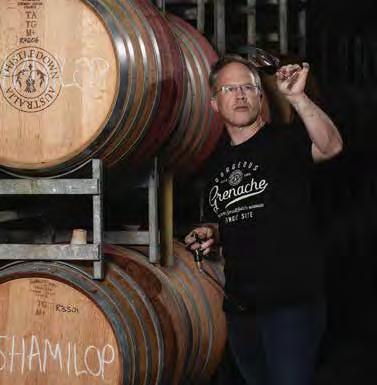








Coleraine, arguably New Zealand’s most prestigious wine, was like King Arthur pulling Excalibur from the stone when it was first launched in 1982. Coleraine has a similarly mythical ability to develop in bottle; my tasting notes inevitably place this perfectly crafted red in the same league as Bordeaux as-was before alcohol levels soared. Although never personally tasted, the ’82 is apparently still drinking well, yet the climate then (even more so than now) was not the most obvious fit for a such a deftly chiselled Bordeaux blend. Back then few imagined Hawke’s Bay capable of such a concentrated wine as Coleraine, even if founder John Buck was not short on justification: the estate’s original Havelock Hills vineyard sits in a rain shadow of sandy loam over clay and sandstone which help retain both water and heat. In marginal climates, consistency always triumphs over intensity. Senior Winemaker Phil Brodie joined the Te Mata team in 1992.
It’s pertinent to add that his CV includes a stint at Château Margaux: Coleraine is its own wine, one that can be either Bordelais or Napa in style depending on the vintage, but is always supremely elegant. Coleraine has always been a blend of Cabernet Sauvignon, Merlot and Cabernet Franc since the inaugural 1982. Every plot is vinified separately; it is difficult not to draw comparisons with the winemaking at Margaux in this respect, where precision is also key. Assemblage takes place after fermentation and only then is the wine run into French oak barriques for lengthy maturation (17 months in 70% new casks for 2022). Coleraine is worthy of icon status and if you’re not casting an eye across a case in your cellar then there’s no better time than C320 to put that right.
“NEW ZEALAND’S OLDEST AND MOST
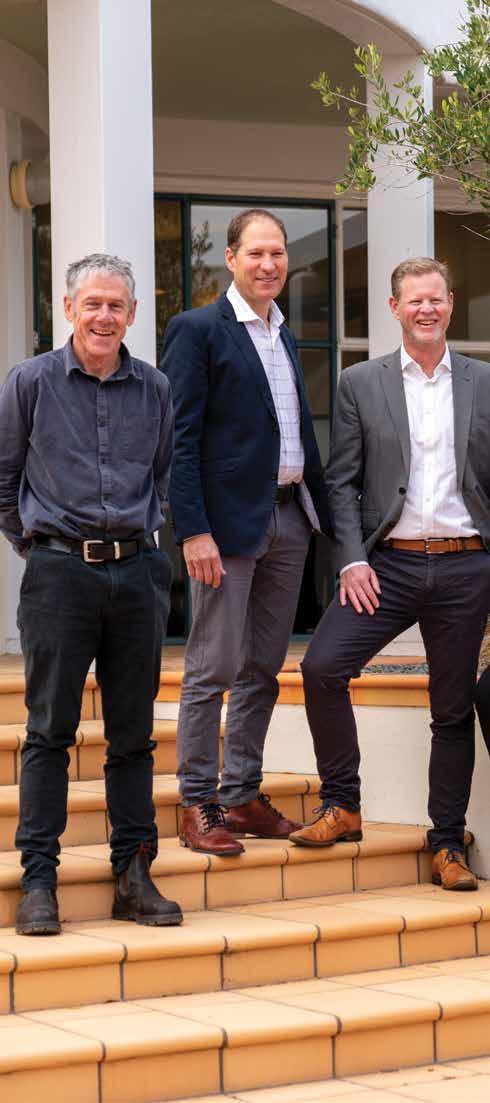
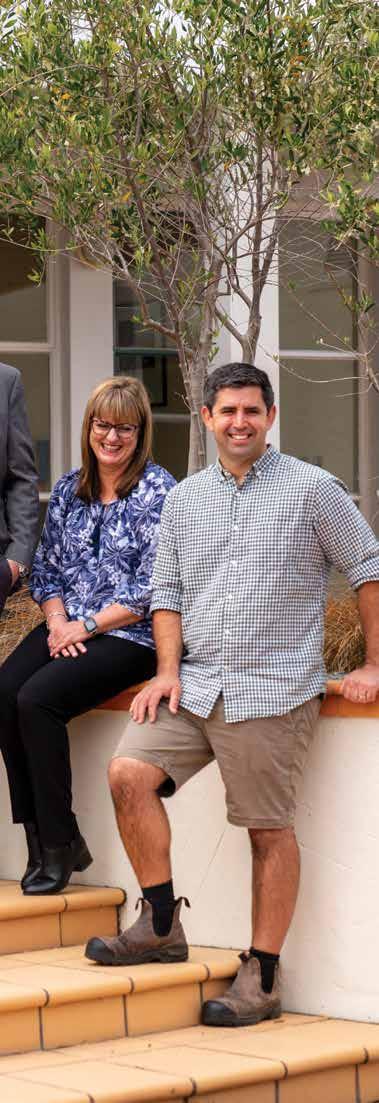
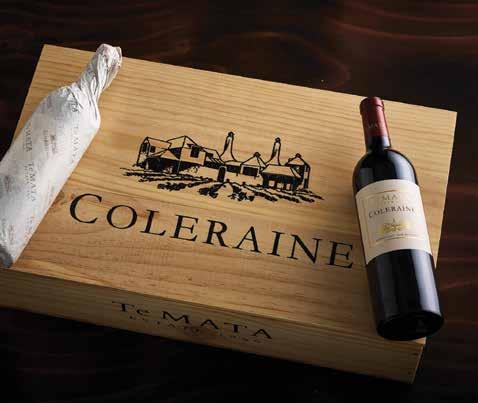

Cabernet Sauvignon, Merlot, Cabernet Franc
Deep ruby hue. Complex despite its infancy, this makes a downright hedonistic entrance, oozing masses of blackcurrant, cassis, and black cherry on the nose. Supporting notes include vanilla, liquorice, cocoa powder, and mint. The palate confirms all the nose foretold: this is a staggering effort and is right up there with the world's greatest Bordeaux blends. There is exquisite balance between fine-grained tannins and the taut, dynamic acidity. Fruit notes are focused and plentiful – eucalyptus, blackcurrant, black plum, ink, pencil shavings, cassis, and wood smoke. For all the power, this finishes sublimely graceful, lingering like the afterglow of a mid-summer sunset. 2030–2040 –mp
Blackcurrant, cassis, vanilla, mint
Eucalyptus, black plum, ink, pencil shavings
By Michael Lutzmann and Greg Rinehart, Opimian Managing Directors
Bourgogne & New Zealand/ Australia. Old World and New World. Historic and groundbreaking. The comparisons are endless. The quality of winemaking is superb.

Bourgogne (France is trying to get the world to use this rather than Burgundy) is the land of Chardonnay and Pinot Noir. Winemakers have been perfecting the 'Burgundian Style' primarily with these two varieties for centuries. It is a region of many small producers who don't have the production or resources to make their wines available globally. Well, that's Opimian's sweet spot and you, as a Member, are the winner.
Welcome our old friends, Lamblin Fils to their new spot in the Opimian rotation. Always best-sellers, they have added a new range - Famille Lamblin wines. These have replaced Folies Parisiennes and promise to be a Member favourite. Your Masters of Wine said 'Stunning Value!'. Many of you are also familiar with Domaine Bonnardot. Time to stock up!
Join the hundreds of 'Everything But Red' subscribers and you'll get to try one of our new Bourgogne producers. We won't tell which one but the two new producers are Domaine de la Pierre des Dames, Depernon Frère et Sœur (our new brother and sister (duo), and returning Domaine Goubard. . Be sure to check them out.
Down under we go. It often takes a new producer a few years to build a following with you, the Members. Not so with Te Mata Estate – NZ’s oldest and most prestigious winery. Offered for the first time in Canada, Lot 5217 is the wine that put TeMata on the map. A wine that can only be bought through allocation and that sells out every year globally. A wine that has appeared not once, but twice on the Institute of Master of Wine’s final tasting exam as ‘the perfect example of a New World Cabernet Sauvignon' - Te Mata’s Coleraine. This is truly a special wine, and embodies what it means to be a Member of Opimian. Their reputation as one of the best NZ wines in the world helped them jump to the front of the line. We can safely say that you want these wines in your cellar and on your table.
The Hardys of Australia are back with a strong showing this year. Both Geoff and Bec continue to impress the MW's, always provide tried and true favourites, and give us something new to try. This year it's a GMH White blend. You can find it on page 16. Unfortunately, there are no wines from Margaret River this year due to a poor harvest a few years ago, but expect to see these wines back in a year or two when things return to normal. In addition, there are several returning wines in this Cellar but you'll have to become a subscriber of The Masters Case to get the new wines from Thistledown
So pull up a chair, open your favourite bottle, and happy reading! Greg & Michael
Let yourself be inspired by Opimian’s Masters of Wine. Our custom chart features a list of symbols to help guide your selection. Still unsure which wines to order? Contact us!
There are three ways to order. The last day to order for each Cellar Offering can be found listed on the cover. No orders will be processed after this time.
The wines featured on this Cellar Offering are still at the producers’ wineries when you order them, so it is normal that the process takes a bit of time and effort on our side.
Release dates are dependent upon actual arrival dates, distance from port of entry to liquor board and processing time required by each liquor board.
Once the wine arrives at your local liquor store or distribution centre, you will receive a Pick-up Notice with the specified date (the Release Date) and your pick-up location. Let us handle the rest.
British Columbia and Ontario members, your wine will be delivered to your door.


is an independent wine educator, writer, and consultant with over two decades of experience in all facets of the global wine trade. She is the first Master of
By Michael Palij, MW

Most wine scholars who care to remember will recall with a wry smile the Kiwi wine industry in the 1980s. It was nigh on impossible to find any bottle of note and consumption was generally associated with White Cloud – one enterprising producer’s response to a surfeit of Müller-Thurgau. If it sounds unseemly, it was. The domestic market was nonexistent and largely an afterthought of the dairy industry; temperature control and stainless steel were a way of life for many farmers. But there were murmurings. One recalls the seminal release of Te Mata’s 1982 Coleraine, CJ Pask’s blockbuster Gimblett Gravels Bordeaux blend of 1985 and, in the same year, Cloudy Bay’s debut, the South Island game changer.
Liberalisation kickstarted by David Lange’s government in the very late 1980s opened the doors for an industry ripe for a make-over. Taxation and licensing were simplified. Australian producers were given market access for the first time. The generic promotional body “Wines of New Zealand” was established and there was a concerted drive to grub up Müller-Thurgau and plant premium varieties. Special mention must go to the sine qua non Cloudy Bay – it was a flag-bearer in exactly the same way that Grange was for Australia and Sassicaia was for Italy. Seemingly overnight dross was out: people wanted to drink premium Kiwi Sauvignon Blanc.
In the unlikely event that, like me, you have studied aerial photographs of Marlborough in 10-year increments (beginning 1995), you will note the dramatic change from sheep pasture to vineyard. 86% of wine exported from New Zealand is Sauvignon Blanc; 77% of it comes from here. The charming and iconoclastic Ozzie academic, Dr. Tony Jordan, brought his pioneering anaerobic (excluding oxygen) winemaking techniques to Marlborough at just the same time as Cloudy Bay was taking the world by storm and the result was nothing short of seismic. Everyone wanted in on the action, and who wouldn’t? The instantly recognisable ‘cat’s pee on a gooseberry bush’ drank straight off the bottling line and retailed for the same price as Sancerre. Succulent primary fruit flavours made it fabulously versatile, and New Zealand embraced Stelvin (screw-cap) closures before anyone else. Iconic wine and less hassle than cork – a star was born.
Getting down to it, Marlborough is a prime winemaking spot. Rain, driven by westerlies, falls overland before reaching the Blenheim area. The soil is largely free-draining alluvial, and coastal breezes impart freshness. There is abundant sunshine – latitude is roughly equivalent to Valladolid in the Northern hemisphere - meaning high yields (and profits) are the norm. Nights, however, are cool, with a diurnal temperature swing that can top 15 degrees. This contributes to those signature pyrazine notes in Sauvignon including tomato leaf, tinned beans and asparagus. Perfect, really.
Marlborough’s success had a domino effect. Drive south for 250km on Highway One (what a drive!) and one reaches Waipara, on the leeward side of the coastal Teviotdale Hills. This complex region with steep slopes, fractured limestone soils, and Glasnevin Gravels is more than a little reminiscent of Alsace; Waipara is a haven for aromatic varietals including Gewürztraminer, Riesling and Pinot Gris. Late harvest styles are food-friendly and delectable.
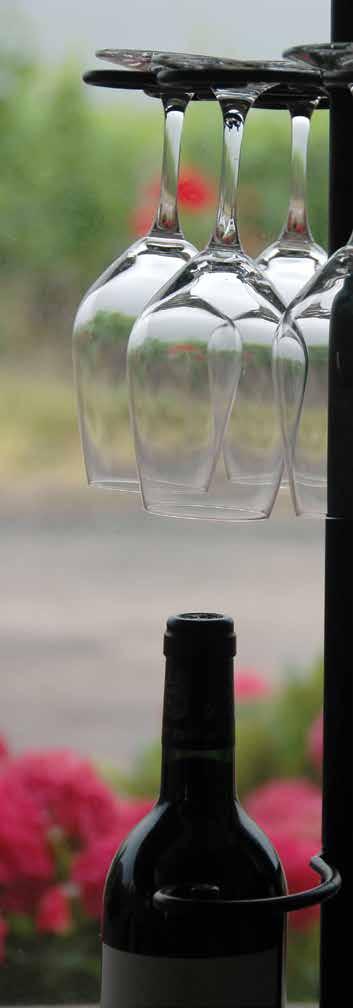

500km further southwest, Central Otago is the other side of the South Island coin: small growers and low yields. What has really put this region on the map is Pinot Noir. The first commercial release was in 1987, with global recognition coming in the early 2000s. Central Otago lies in a gigantic rain shadow so it’s bone dry and has the mother of all diurnal temperature swings – from 0°C at night to 35°C during the day. These are exciting conditions, even if the cost of production is significantly higher than in Marlborough due to the small scale of production and low yields. Estates tend to follow the Burgundian model: small (often less than 10ha in size), low intervention (but always irrigated) vineyards, high prices and premium quality. Of the many styles, the best are characterised by bright red fruit, high alcohol, a luscious silkiness, and the obvious use of oak. Try something like Paul Pujol’s Prophet’s Rock Home Vineyard from the Bendigo subregion for a taste of Central Otago’s cherry and herbal richness.
North Island has its own Pinot Noir nucleus in tiny Martinborough. Near the southern end of the island and actually a sub-region of Wairarapa, modern plantings date from the 1970s. Its trump card is a raised plateau of alluvial gravel that affords excellent drainage properties, encouraging just the right amount of hydric stress. The climate is not dissimilar to Marlborough, although the output is arguably a big step up: hugely nuanced and plummy Pinot Noir in a way that has drawn comparisons with Burgundy. Ata Rangi is the region’s most celebrated producer, together with Dry River and Kusudu. To this palate, Martinborough pips Central Otago to the Pinot Noir post.
Although the climate in New Zealand may seem too marginal for grapes with thicker skins, careful site selection can reap brilliant rewards and nowhere is this more true than in Hawke’s Bay. Apparently, town planners allowed drag strips to be built on Gimblett Gravels (Hawke’s Bay’s premium sub-region) because one could not give the land away. ‘You can’t grow anything here,’ was the usual mantra, yet the high reflectivity and freedraining properties of the soils meant that grapes could be grown with resounding success. Coleraine caused a mighty stir when first released, but the real surprise is why Bordeaux varieties were not pursued in Hawke’s Bay in the same way as Sauvignon was in Marlborough. Yet again, the region sits in a rain shadow, and, of course, temperatures are moderated by proximity to the sea. Te Mata’s reputation for reds was secure as early as 1899 but, since then, it seems the lure of easy money further south (i.e. Sauvignon Blanc) proved impossible to resist. Fortunately, Hawke’s Bay now has a clutch of world-class producers apart from Te Mata including the leviathan Villa Maria and Trinity Hill.
80km north of Hawke’s Bay is Gisborne with a steady coastal climate that made it the original go-to region for Chardonnay. Maritime breezes slow the growing season and allow fruit to develop the necessary aromatics. The government introduced a vine pull scheme in the 1980s to support the transition from bulk drudgery to respected Geographical Indication. Gisborne is now making some decent Chenin Blanc (this may seem left-field but the wines suggest it was a good decision) alongside Chardonnay.
Waiheke Island, due east of Auckland, sounds adventurous and the wines are too. This said, it is more old school money from Auckland that greases the wheels rather than artisans’ budgets. The scene is small: under 30 wineries - some independent, others part of larger mainland holdings, all well-funded with established cellar-door trade for day-trippers from the capital. A moderating influence from surrounding waters is important, but brings with it high humidity. Bordeaux blends were Waiheke’s original success story but Syrah, grown since the early 2000s, seems to be stealing the show.
Te Mata Estate takes its name from the eponymous Te Mata Peak, a significant cultural and geographic landmark just a few miles away. The full name is Te Mata O Rongokako which, in the local Maori language, translates as The Sleeping Giant. These are some of New Zealand’s oldest vineyards (planted in 1892) and 128 years of continuous production suggests that someone judges the output worthy of consumption.
John Buck, together with the Morris family, purchased Te Mata in 1974, aiming to build on the winery’s already healthy reputation for quality reds. The release of his 1982 blend ‘Coleraine’ (named after the birthplace of his late grandfather) took the critics by storm and secured Te Mata a place in winemaking folklore. The estate selects the best fruit to make Te Mata wines and sells the remaining 50% of its fruit to continue investing in improving the vineyards and cellar and, under John’s son, Nick, shows a continued appetite for excellence.
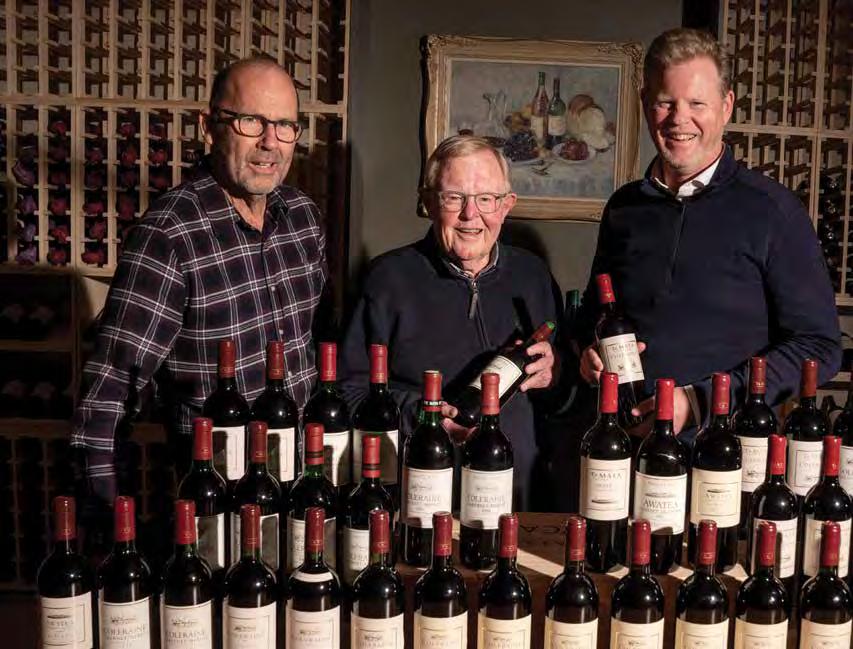


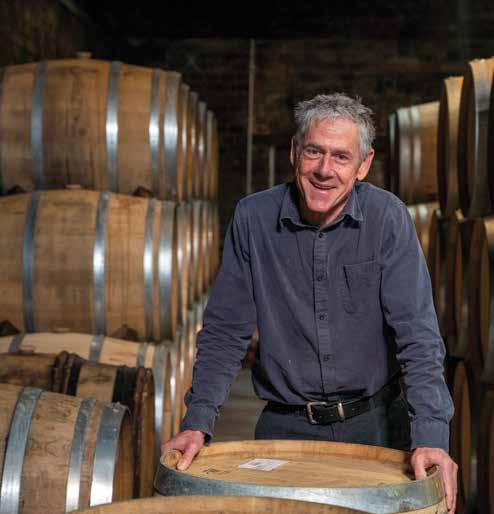

Medium lemon hue. Discreet nose that is yet to unfurl but already hinting at something rather interesting. Enticing aromas of passion fruit, lemon curd, lime zest, and wet stone. The palate is defined by beautifully balanced alcohol, brisk acidity, plus punchy, puckering flavours of citrus, quince, and apricot. Primary fruit drives the ripe and rounded finish. 2025–2026 – mp
5219 TE MATA ESTATE CHARDONNAY,
Pale gold in colour, with a pronounced nose of both tropical and stone fruits draped in a glossy coat of snug-fitting oak. There is more, butterscotch and bacon fat alongside a heart of pineapple and peach. The appetising palate makes good on this promise and exhibits complex layers of apricot, nectarine, vanilla, coconut, and apple. Barrel maturation notes come into play on an impressive finish. 2025–2027–mp


5220 TE MATA ESTATE MERLOT / CABERNETS, HAWKE'S BAY, 2023
Merlot, Cabernet Sauvignon, Cabernet Franc
Medium ruby. A bright and cheery nose brimming with blackcurrant, plum, sweet spice, and blackcurrant leaf. The sort of palate that one is not going to say no to, this has silky tannins enveloping ripe fruit and the finish is topped off with a sprinkle of earthy notes. 2025–2026 – mp
Grilled mushroom medley with Saint-Agur

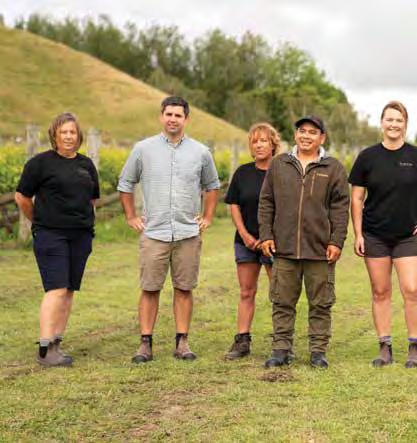
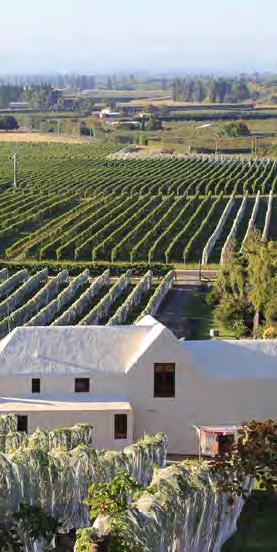
5221
The initial nose is unmistakably Syrah –crushed black pepper, ripe blackberry, blueberry, but this also has expressive touches of mineral oil, kirsch, and wet stone. An intricately-assembled palate offers another round of rich black fruit plus peppery notes bound by fine, supportive tannins. Medium-bodied and easy on the oak, this is definitely more Hermitage than Hunter. 2025–2028 –mp
Syrah 5222
Grilled double-cut pork chops
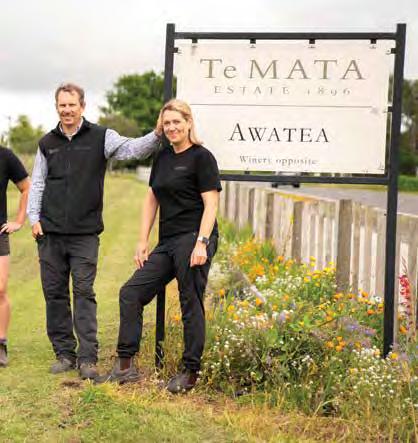


BAY, 2022
Merlot, Cabernet Sauvignon, Cabernet Franc
A dead ringer for petit château claret with beautiful, crystalline fruit. There are layers of blackberry, blackcurrant, mint, shoe polish, cedar, and vanilla – and that is just the nose! The moreish palate is packed in neat rows of blackberry, cassis, plum, and black cherry, against a backdrop of eucalyptus and vanilla. This will continue to develop if you can keep from drinking it; it’s surreal value given the price. 2026–2030 – mp
Grilled bone-in ribeye with blue cheese
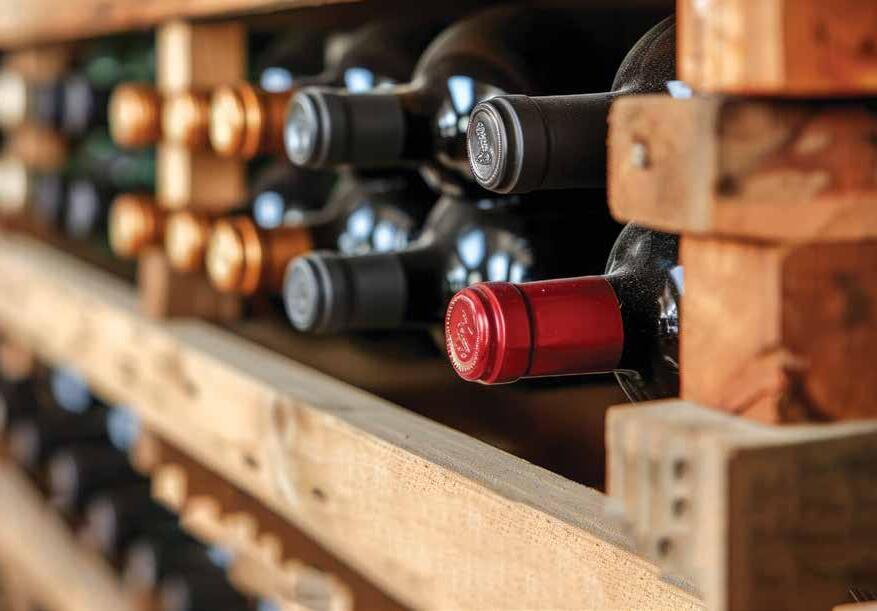

Te MATA Estate Sauvignon Blanc, Hawke’s Bay, 2024, Lot 5218, P9
One of the joys of being an Opimian Member is having access to world-class wines that very few people can taste. This is one such wine. Beautifully balanced. Complexly delicious.

Our Cellar Up! program is evolving to make your ordering experience even smoother.
Many Members love to order each of the Coups de Coeur. For this Cellar, you can easily order all four Coups de Coeur, the top selections from your Masters of Wine, with a single lot number. CHEERS TO CONVENIENCE AND QUALITY.

Take advantage of buying Cellar Up! and get these wines at this special rate.

Chablis, Vieilles Vignes, AOC, 2023, Lot 5250, P28
When you’ve been making wine since the late 1600’s as the Lamblin’s have, you learn a thing or two. All of that learning has gone into what MW Jackie Blisson describes as ‘a triumph’. An icon among iconic wines!
$ 1614
Domaine Bonnardot Ladoix “Les Ranches”, AOP, 2023, Lot 5272, P38
According to any wine expert you talk to, Bourgogne (you may know it as Burgundy), makes the world’s finest Pinot Noir. Order and cellar this one for drinking later in the decade. You will be wonderfully rewarded. LOT 5280

Thistledown Fool on the Hill Grenache Mattschoss Vineyard, Eden Valley, 2022, Lot 5235, P21
You’ll be no fool to have this one tucked away in cellar. With descriptors like spellbinding and impressive from our MW’s, you can’t go wrong. Again, another gem that very few wine lovers in the world can get their hands on.
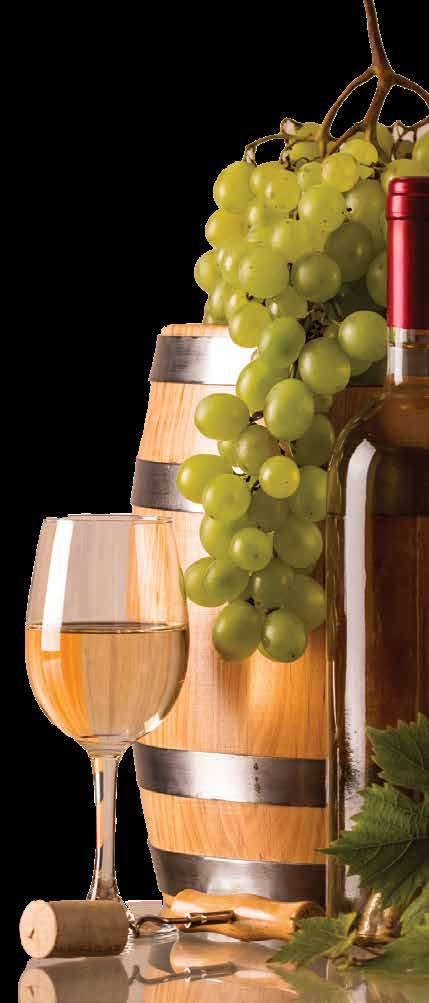
THIS CELLAR'S FAVOURITE WINES BY OUR MASTERS OF WINE


TE MATA ESTATE SAUVIGNON BLANC, HAWKE'S BAY, 2024, LOT 5218, P9


CHABLIS, VIEILLES VIGNES, AOC, LOT 5250 OR LOT 5251 (MAGNUM), P28
THISTLEDOWN FOOL ON THE HILL GRENACHE MATTSCHOSS VINEYARD, EDEN VALLEY, LOT 5235,


BONNARDOT LADOIX "LES
AOP, 2023, LOT 5272, P38

Australia has been making wine for over two centuries and is home to some of the world’s oldest vines and vineyard soils. While South Australia boasts the largest swathe of vineyards and highest production volumes, growing areas stretch from New South Wales to Perth. Over 100 different grapes grow here, with Shiraz and Chardonnay crowning the list. In warmer vineyard areas, like the Barossa Valley or McLaren Vale, single varietal wines and blends based mainly on Rhône and
Bordeaux grapes dominate. Whereas, in cooler coastal or higher altitude areas, like Adelaide Hills, Eden Valley, or Tasmania, excellent Riesling, Pinot Noir, Chardonnay, and sparkling wine can be found.

LEARN MORE ABOUT WINES BY GEOFF HARDY

As a descendent of South Australia’s most prominent winemaking family, Geoff Hardy had big shoes to fill when he launched his winery and fill them, he most certainly has! Wines by Geoff Hardy is a two-time winner of the prestigious “Australian Winery of the Year” title from Winestate Magazine. The estate was always ranked five stars by Australia’s top wine writer, James Halliday. Geoff Hardy produces hand-crafted, sitespecific wines from his K1 vineyard and surrounding sites in Adelaide Hills. He also makes delicious varietal wines and blends sourced from across South Australia, under his great value GMH label.
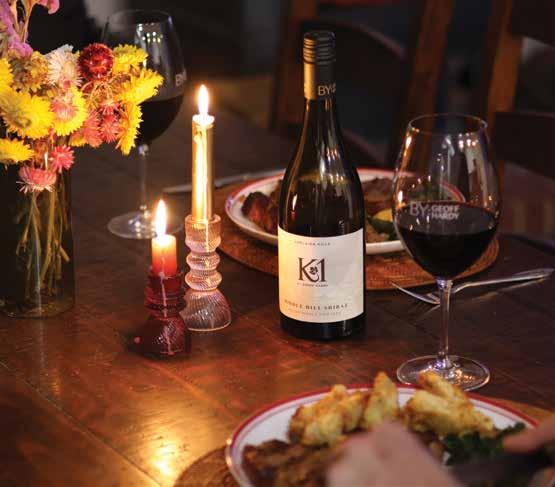

Shiraz performs beautifully in the Adelaide Hills, giving a brighter, more lifted expression than in warmer, lower lying areas. The K1 cuvée is broad and juicy with lively acidity and classic, cool climate notes of cracked pepper and tangy red fruit, underscored by riper cassis notes and oriental spice. Weighty and persistent, with grippy tannins providing a fine structural framework. Needs a little time to soften. 2025-2037–jb
K1 SINGLE VINEYARD GRÜNER
VELTLINER, ADELAIDE HILLS, 2023
Grüner Veltliner

The Adelaide Hills are home to some stunning, nervy bright Sauvignon Blanc wines, so it is no surprise that the similarly high acid, taut Grüner Veltliner produces good results here. This is a very stylish white wine with vivid citrus and white pepper notes, and riper tropical undertones. The palate is crisp and medium weight, with a textural, layered core. 2025-2030 –jb
Apricot, guava, grapefruit, white pepper
Grapefruit, lemon, guava, mango [2.60]
Panko-fried chicken with lemon aïoli
5226
GMH FAMILY SELECTION WHITE BLEND, SOUTH AUSTRALIA, 2024
Verdelho, Muscat Blanc à Petits Grains, Pinot Gris, Chardonnay
5227 GMH MERITAGE, SOUTH AUSTRALIA, 2023
Cabernet Sauvignon, Merlot, Petit Verdot

The GMH Meritage is a blend of Cabernet Sauvignon, Merlot, and Petit Verdot with a firm, chiselled, refreshing character. Attractive black and blue fruit dominate the nose and palate, with pleasant minty, eucalyptus type notes developing over time. Muscular and ripe, with more than enough brightness for balance. 2025-2032–jb
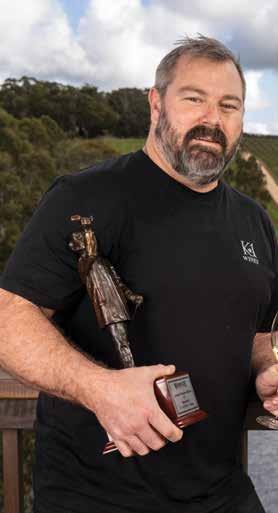
Plum, eucalyptus, licorice, bell pepper
Plum, cassis, mint, dark chocolate
Smash burgers with smoked Gruyere, sautéed onions and mushrooms
Melon, peach, musk, yellow apple
Lemon, apple, pear, melon [2.00]
Fresh-shucked oysters

Spanish grapes are increasingly showing promising results in South Australia, and this Verdelho-led white blend is a pleasant example. Exuberant stone and tropical fruits feature on the nose. The palate is very smooth and glossy, with lots of freshness and a rounded finish. Nice everyday white wine. 2025-2029–jb
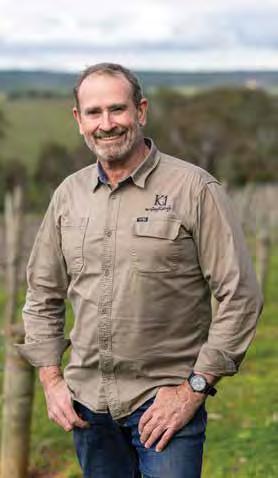


The GMH Cabernet Sauvignon offers good value, with its aromatic herbal nuances, ripe dark fruit, and pleasantly mouthwatering acidity. The palate is fullbodied, with firm tannins, and lingering smoky tobacco nuances. For an interesting pairing, choose a smoked meat or veggie option. Good short to moderate term ageing potential. 2026-2032 –jb

5230
GMH FAMILY SELECTION RED BLEND, SOUTH AUSTRALIA, 2021
Malbec, Lagrein, Petit Verdot, Dolcetto, Tannat
$ 3 4 $ 204
The GMH Family Selection red blend marries fleshy, rounded Merlot with more tannic, muscular grapes like Petit Verdot and Tannat. The result is a full-bodied quite velvety red that tapers to bold, chunky tannins. Aromas and flavours of ripe dark fruit and leather mingle with hints of high quality, aged balsamic vinegar. Nice barbecue red. 2025-2032–jb
Barbecued Black Angus burgers
One of my standout value wines from the tasting. This South Australian Shiraz shows a distinctly Northern Rhôneesque quality with its abundance of black pepper, cassis, and smoked meaty notes. The palate is really fresh, vibrant and polished, if somewhat lean, with pure dark fruit flavours, and fine-grained tannins. 2025-2032 –jb

In 1850, British settler Thomas Hardy begun making wine in South Australia. His enterprise quickly grew and spanned several generations, with many considering him a pivotal figure in establishing the region’s winemaking reputation. Just like her father, Geoff Hardy, Bec Hardy is a pioneering winemaker in her own right, establishing her own winery in 2015 in the coastal McLaren Vale region of South Australia. Bec’s boutique wines from her Tipsy Hill estate and across the wider region reflect her love of pure, bright fruited wines with a sense of place.

5231 BEC HARDY SPARKLING, NV
A rounded, smooth sparkling wine with lifted citrus notes of hints of orchard fruit and melon. Quite soft overall, with subtle effervescence and uncomplicated candied fruit flavours. Styled in a fruity, off-dry style, this is a wine to serve well chilled on a hot summer’s day. Pair with fruit-based dishes. 2025-2026–jb



Heady notes of black olive tapenade, baked cherry, and hints of smoky tar mingle on the nose. The palate is equally ripe and voluptuous, with sweet dark fruit flavours, and a broad structure. Finishes with slightly grainy tannins. Needs time and a hearty food pairing. 2025-2030 –jb


5233

BEC HARDY CABERNET
SAUVIGNON, MCLAREN VALE, 2023
Cabernet Sauvignon
This is a taut, full-bodied expression of Cabernet Sauvignon, bursting with jammy blue and black fruit. Undertones of cedar and eucalyptus add interest on the nose. The dark-fruited palate is bookended by brisk acidity and sinewy tannins, giving reasonable balance and a firm structure. 2025-2030 –jb
5234

NEW
BEC HARDY CABERNET SAUVIGNON, BAROSSA VALLEY, 2021
Cabernet Sauvignon
While Bec Hardy’s McLaren Vale Cabernet Sauvignon is all about lush, jammy fruit the Barossa Valley cuvée offers a more brooding personality with undertones of tar and pencil shavings to its baked dark fruit. Dense and weighty on the palate, with big, chunky tannins typical of this warm area. 2025-2032–jb
dark
Masters of Wine Giles Cooke and Fergal Tynan are the brains behind this négociant model, tapping South Australia’s (with a focus on the McLaren Vale) potential for world-class Grenache. They consistently master the art of integrating alcohol with palatecleansing freshness by selecting fruit from growers in the very best subzones. Their Wild & Wilder range is meant to be an easy-going introduction to Australian grape varieties but it punches well above its weight.
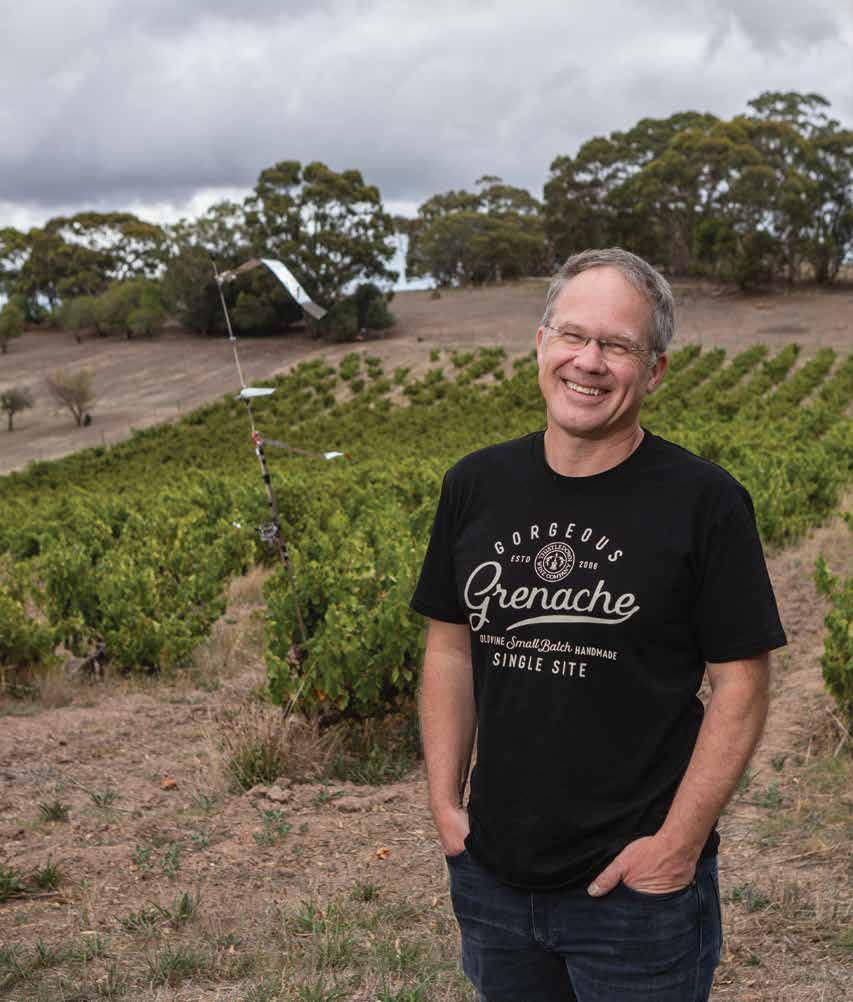

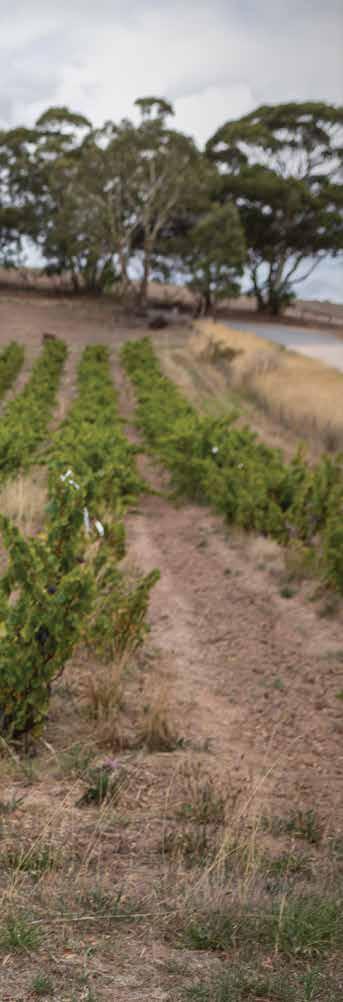
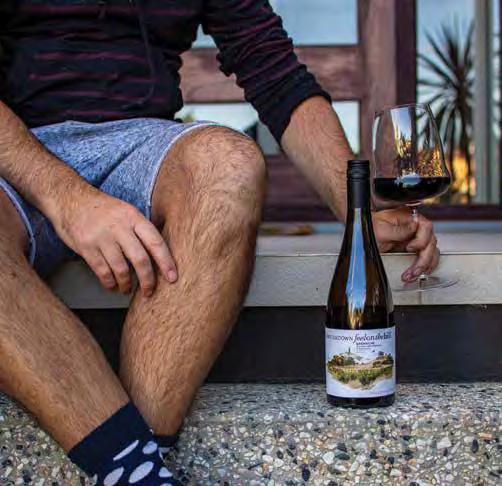

5235
THISTLEDOWN FOOL ON THE HILL GRENACHE, MATTSCHOSS VINEYARD, EDEN VALLEY, 2022
Grenache
Pale ruby. A spellbinding nose with huge range of aromas including strawberry, raspberry, red cherry, cranberry, thyme, iodine, blueberry, black pepper, prune, and dried blackberry. The palate is lavish, with a bright core of red fruit plus blackberry, and oaky sweetness. What really stands out is the impressive alcohol / acidity / fruit balance. Grenache so often tips into steroidal body-builder but this is Rudolf rather than Dwayne. 2026–2032– mp


5245
FAMILLE LAMBLIN SAUVIGNON BLANC, IGP PAYS D'OC, 2023
Sauvignon Blanc
A simple, well-made Sauvignon Blanc from the south of France with discreet citrus and herbal aromas. The palate is light and linear, with attractive green fruit flavours, lots of freshness, and a dry, unoaked finish. Good value every day white wine perfect to sip while preparing dinner and listening to your favourite podcast. 2025-2027–jb

DISCOVER THE NEW FOLIES PARISIENNESSTUNNING VALUE!
5247
5246
FAMILLE LAMBLIN MUSCAT, IGP PAYS D'OC, 2023
FAMILLE LAMBLIN CHARDONNAY, IGP PAYS D'OC, 2023
Muscat grapes are equally delicious to eat by the bunch or make into wine. A highly aromatic variety, Muscat wines tend to leap from the glass with floral, fruity, and wild musk scented notes. The Famille Lamblin 2023 shows fine Muscat typicity on the nose and a supple, soft palate. Dry and unoaked. 2025-2026 –jb
As a long-established producer of fine Chablis wines, Famille Lamblin is a veritable Chardonnay expert. This offering, from the south of France, is very good for the price. Sun-kissed notes of lemon curd, stone and tropical fruits bring a lot of appeal on the nose. The palate is medium-bodied and smooth, with lingering yellow fruit. 2025-2027–jb


5248 FAMILLE LAMBLIN ROSÉ, IGP PAYS D'OC, 2023
The 2023 Famille Lamblin Rosé is made from a typical Languedoc blend of Grenache, Syrah, and Cinsault. The nose offers uncomplicated floral and red fruit notes. The palate is rounded, with subtle red berry flavours and a dry finish. A rosé to drink young and fresh. 2025–2026 –jb

5249
WINES TO SAVOUR ANY DAY OF THE WEEK

A surprisingly appealing Merlot-Cabernet blend with heady, confected dark fruit and floral aromas. Quite plush on the palate, balanced by tangy acidity, and lively dark fruit. The tannins are ripe, with a subtly chewy edge that gives dimension to the finish. Serve slightly chilled with all manners of hearty or lightly spiced fare. 2025-2029–jb $ 18 $ 216


5236
WILD & WILDER THE WILD ONES CHARDONNAY, SOUTH AUSTRALIA, 2023
Chardonnay
Medium lemon. There will be plenty of takers for this with its tropical mango and banana aromas plus stylish, wetstone component. The palate brims with pineapple, lychee, melon, and light butterscotch notes adding complexity. Textbook, bold, refreshing and good value. 2025–2026 – mp
5237
WILD & WILDER THE COURTESAN RIESLING, CLARE VALLEY, 2022
Riesling NEW
Pale lemon hue. Difficult not to fall in love with this definitive example of Clare Valley Riesling. The nose offers green apple, lemon pith, slate, and crème pâtissière. A lean, focused palate reveals a beautiful concentration of ripe citrus notes, florals, and mouth-watering acidity. 2025–2030 – mp
A bowl of Viet-Thai

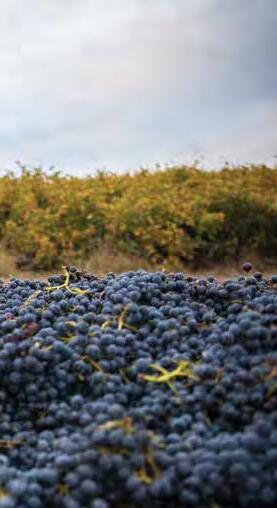
WILD & WILDER THE PUGILIST
CABERNET SAUVIGNON, SOUTH AUSTRALIA, 2022
Cabernet Sauvignon
Although only medium ruby in the glass, the nose jumps out offering blackberry, cooked plum, black cherry, clove, cedar, bell pepper, and liquorice. On the palate the spice continues with nutmeg, clove, anise, black pepper and menthol. Dusty tannins and moderate acidity work together to showcase the dark berry fruit with a long and spicy finish. Fire up the barbie and enjoy this with burgers and steaks. 2025–2027–mp
Nutmeg, clove, anise, black pepper
Grilled ribeye steak with a black pepper and rosemary crust


35
Vibrant, deep ruby colour. Energetic, medicinal nose of iodine, leather, and crushed black pepper. The plump palate layers blackberry and cooked plums with black tea, sandalwood, and tar. Tannins are ripe and well-integrated and there is plenty to keep one entertained on the luscious finish. 2025–2026 – mp


5241
GORGEOUS SHIRAZ, OLD VINE SMALL BATCH HANDMADE NO. 4, RIVERLAND 2023
Shiraz, Zibibbo, Fiano
This is indeed a gorgeous Shiraz, with its sleek, glossy texture and vibrant fruit. Sourced from the sunny Riverland wine region in South Australia, the 2023 Shiraz is wild fermented with a small portion of Zibibbo (aka Muscat). This aromatic grape enhances the very fragrant nose and adds to the rounded nature of the palate. Brief ageing in old French oak gives a very smooth, supple finish. 2025-2030 –jb

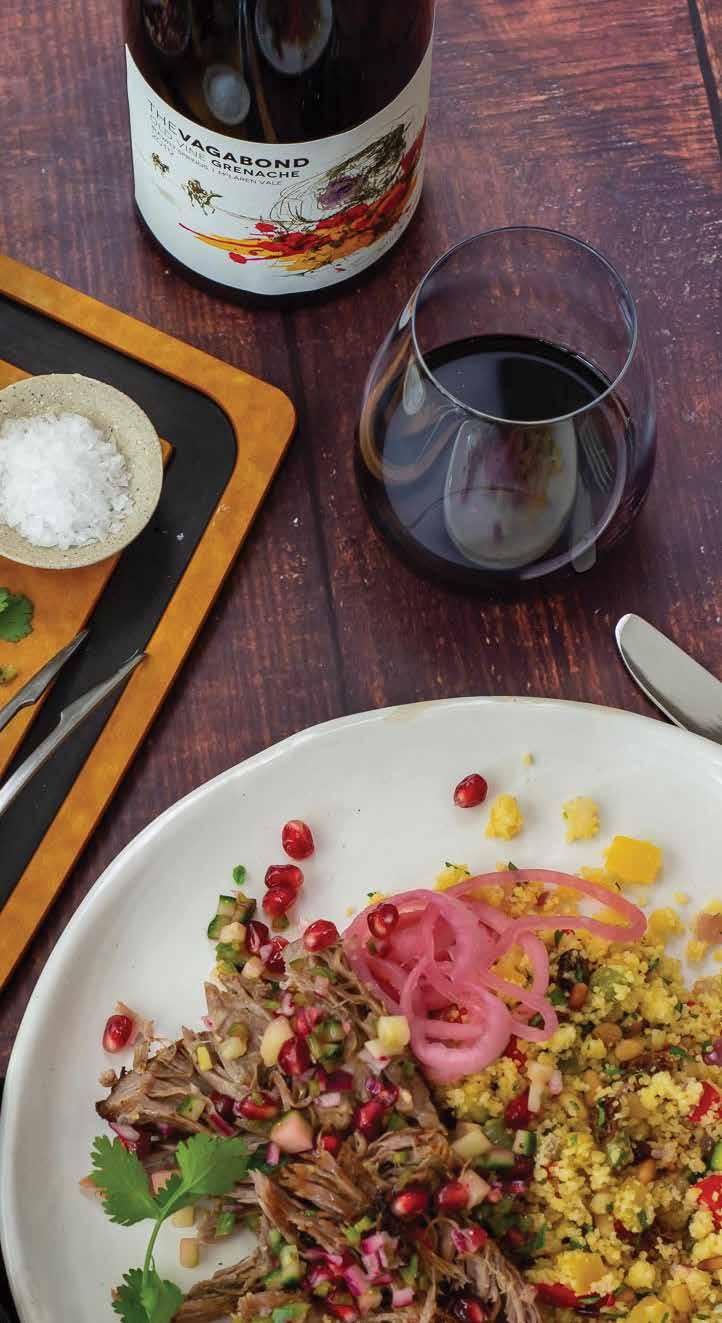

THISTLEDOWN THE
Pale purple. From the superior cracked shales of Blewitt Springs come this epic Grenache with layers of flavour all under a cool, menthol tarp. The assertive nose of vanilla, strawberry coulis, and griottes leads to a dense palate of raspberry, blueberry, incense and menthol all supporting a stylishly, aromatic and perfectly balanced finish. 2025–2030 – mp
If there is one wine region that is defined by its singular terroir – that alchemy of soil, site, grape, and winemaking that gives wines from certain, specific places their unique character – it is surely Chablis. This cool, semi-continental region in northern Bourgogne is dedicated exclusively to Chardonnay grown mainly on Kimmeridgian soils. This pure chalky limestone, teeming with Exogyra virgula fossils (small comma-shaped oysters), layered with marl, dates back to the Jurassic period. According to experts, this mix of climate and, especially, soil give Chardonnay from Chablis its distinctive taut, racy, mineral profile. The vineyards of Chablis are located on both banks of the Serein River, surrounding the town of the same name. The Petit Chablis and Chablis appellations offer value and good, regional expression. For the best, most age worthy wines, seek out the 1er and Grand Cru vineyards. These plots are generally south facing to maximize sun exposure giving richer, more concentrated wines.
The Lamblin family can trace its viticultural history in Chablis back to 1690. The estate is one of the oldest of the region, and remarkably, still run by the same family. Today, Lamblin & Fils is run by Alexandre and Clément, the 12th generation of Lamblin descendants. Based in Maligny, on the right bank of the Serein River, the family produces wines from some of the finest Grand and 1er Cru vineyards, as well as excellent quality regional Chablis. They have also expanded beyond their borders to offer well crafted white and red wines from across Bourgogne, the Rhône Valley, and south of France.


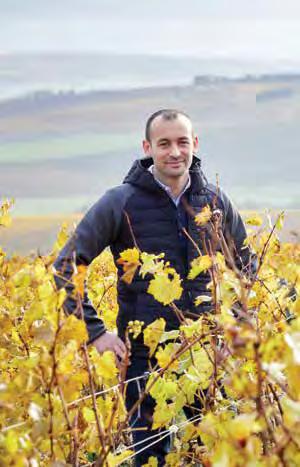
Lamblin & Fils Vieilles Vignes (old vine) Chablis hails from 40-year-old vineyards in the heart of the appellation. The 2023 vintage is a triumph. Attractive tart fruit and earthy mineral notes, so classic to the region, are interwoven with riper tropical fruit nuances. The same duality exists on the palate, which is initially crisp and steely, giving way to a creamy, expansive mid-palate, and finishing with lingering minerality. 2025-2030 –jb

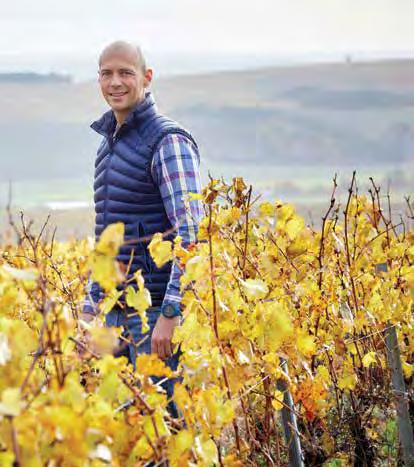
LEARN MORE ABOUT LAMBLIN & FILS


5253 BOURGOGNE ALIGOTÉ, AOC, 2023
5252
A light, zesty expression of Bourgogne Aligoté, with discreet citrus, herbal, and floral nuances. The palate is lean and nervy, with mouthwatering acidity, and a very dry, linear finish. This is a classic apéritif wine best sipped on its own or with delicate dishes that won’t overpower its subtle character. 2025-2028 –jb
LAMBLIN & FILS BRUT ROSÉ CRÉMANT DE BOURGOGNE, AOC, 2023
Pinot Noir, Gamay
This Crémant de Bourgogne rosé is produced from a blend of Pinot Noir and Gamay, sourced from across the greater Burgundy region. Notes of earthy red berries mingle with leesy hints of ginger biscuit on the nose. The palate is broad and smooth, with broad, rounded bubbles and a fruit, brut dosage. 2025-2027–jb
5254 SAINT-BRIS SAUVIGNON, AOC, 2023
Sauvignon Blanc
lobster
Though Chardonnay is the undisputed champion of white winemaking in Bourgogne, with growing pockets of fine Aligoté, the appellation of Saint-Bris is an outlier. Here, Sauvignon Blanc reigns. The Lamblin 2023 cuvée is elegant and understated, with pretty chamomile and fennel hints on its citrussy nose. The palate offers fine, piercing acidity, medium body, and refreshing herbal bitters. 2025-2028 –jb
12.5%

The “Fleur d’Acacia” cuvée is true to its name, with delicate notes of spring blossoms, alongside its citrus and apple aromas, and underlying sourdough bread hints. This is a lithe, taut Chablis with racy acidity and tangy green fruit flavours. Finishes with refreshing grapefruit bitters. 2025-2028 –jb



AOC, 2023
terrine
This is textbook Chablis on the nose, with its restrained lemon, orchard fruit, earthy profile. The palate gives hints of the warmer 2023 growing season, with its riper fruit, mouthwatering, yet rounded acidity, and broad structure. Finishes with pleasing salinity that beckons another sip. 2025-2028 –jb
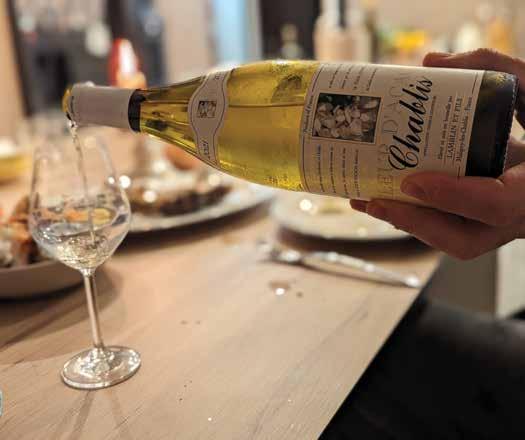
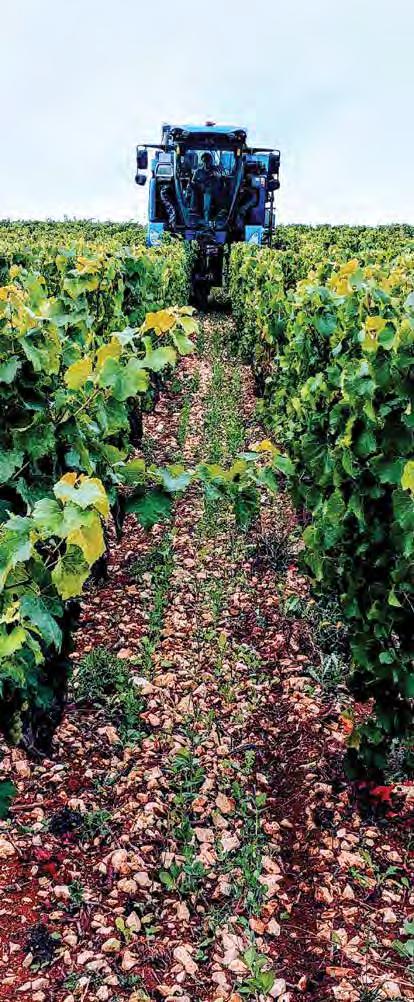
5258
Syrah, Grenache
Côtes du Rhône is one of those easy, crowd-pleasing red wines. The best ones offer good value and have ripe (but not overly intense) dark fruit and spice flavours, a supple, medium bodied palate, and smooth tannins. This is a great example, ticking all the boxes. Bright, rounded, and fresh with vivid fruit, and hints of dark chocolate. 2025-2028 –jb
14.5%

Pinot Noir
The Irancy appellation is located in northern Bourgogne, not far from Chablis. The cooler climate here gives peppery, herbal, earthy nuances to the just ripe red fruit flavours. The palate is quite taut, with brisk acidity, and lingering baking spice. This is a medium bodied Pinot Noir with lots of freshness and verve. Needs a little time to soften. 2026-2035–jb
Clove, nutmeg, plum, earthy
Sautéed sweetbreads with mustard seed and mild chili pepper

5260
LAMBLIN & FILS CÔTE-D'OR CASE - 1 BOTTLE EACH: WOOD CASE
$ 146$ 438



VOLNAY AOC, 2023
The 2023 Volnay from Lamblin & Fils is surprisingly approachable, even at this youthful age. The nose offers pretty floral, cherry, and spiced aromas that are initially restrained but quickly gain in intensity. The palate is similarly styled – quite fresh and taut but with ripe, rich fruit and an expansive quality, tapering to fine-grained tannins. Drink now or hold 10 years +. 2025-2035 –jb
ALOXE CORTON, AOC, 2023
Pinot Noir
There is an appealing earthy, savoury component to this wine that underscores its tangy fruit bringing added complexity to the nose and palate. Overall, a very fresh, open knit Pinot Noir with a satiny texture giving way to somewhat angular tannins. The savoury, gamey notes linger on the dry finish. Definitely a food wine, and a lovely one at that. 2025-2035 –jb
GEVREY-CHAMBERTIN AOC, 2023
Pinot Noir
The Gevrey-Chambertin appellation is known for its fuller-bodied, more structured style of Pinot Noir and this 2023 vintage from Lamblin & Fils is true to type. Quite restrained on the nose, with a dense, structured palate, lots of freshness, and muscular tannins. It needs a little time for the oak to integrate further and tannins to soften. When it does, this should be a delicious red – with its layers of fruit, floral, spiced, and toasted flavours. 2026-2038 –jb


CHABLIS PREMIER CRU CASE3 BOTTLES EACH: VAILLON AND FOURCHAUME
$ 77 $ 462
This Premier Cru mixed case is a must for Chablis lovers. The vineyards of Vaillon on Chablis’ left bank face south and east, exposing them to the morning sun. The wines are renowned for their elegance and mineral tension. Further north, on the right bank, the mighty Fourchaume vineyards span 4 kilometres, facing west and southwest. This orientation, coupled with clay-rich soils, give Fourchaume wines a generous, opulent character.
LAMBLIN & FILS CHABLIS PREMIER CRU, VAILLON, AOC CHABLIS 1ER CRU, 2023
Chardonnay
Vaillon, from the latin “vallis” meaning little valley, was one of first left bank vineyards singled out for elevation to 1er cru status. It is easy to see why. This is an ultra precise, mineral-driven white wine with great energy and a whole lot of poise. Nervy green fruit, flinty, and earthy notes bring a lot of refreshment and undeniable complexity on the nose and palate. 2027-2040 –jb
13%
Salmon fish cakes with lemon and parsley


CHABLIS PREMIER CRU, FOURCHAUME, AOC CHABLIS 1ER CRU 2023
Chardonnay
The overt expression of the Fourchaume Premier Cru is ably on display here. Tempting aromas of ripe yellow fruit and sweet biscuits are nicely balanced by savoury, earthy bass notes. The palate is crisp and broad, with medium weight, and generous, fruit-focused flavours. Finishes with subtle, refreshing bitters that add to its food friendly appeal. Already approachable but best with a few years’ additional bottle ageing. 2026-2040 –jb
13%
apple, apricot, digestive biscuit, mushroom
Yellow fruit, earthy, savoury undertones [0.50]
Grilled sea bass
In the Middle Ages, the monks of the powerful Cluny and Citeaux abbeys initiated the concept of terroirfocused winemaking in Bourgogne. Over the centuries, the region cemented its fine wine reputation, which continues steadfast to this day. The vineyards of Bourgogne stretch from north of Chablis, to the Mâconnais. The cooler north is dedicated almost exclusively to Chardonnay, in a flinty, elegant, high acid style with minimal oak influence. Following the vineyards south to the limestone escarpment of the
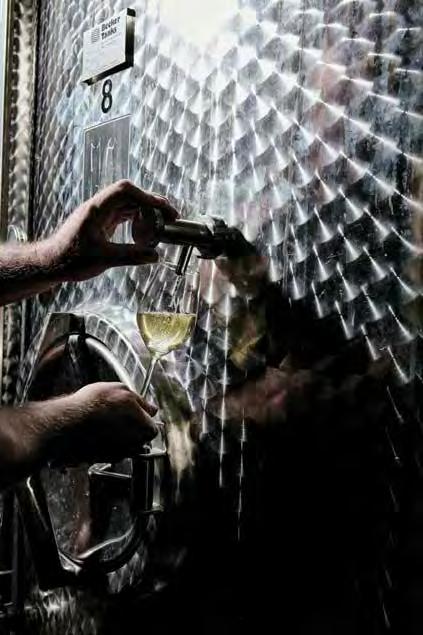
Côte d’Or, we come to Pinot Noir territory, on the Côte de Nuits. The world’s finest Pinot Noir is made here, in a powerful, fragrant, and finely tannic style. The Côte de Beaune is home to top Chardonnay vineyards, in a crisp, weighty, textural style. To the hillier south, we find the Côtes du Couchois and Côte Chalonnaise, both producing great value, earthier whites and reds. Finally, in the Mâconnais vineyards, Chardonnay takes on a riper, sun-baked personality and Pinot Noir gives way to fruity, bright Gamay.
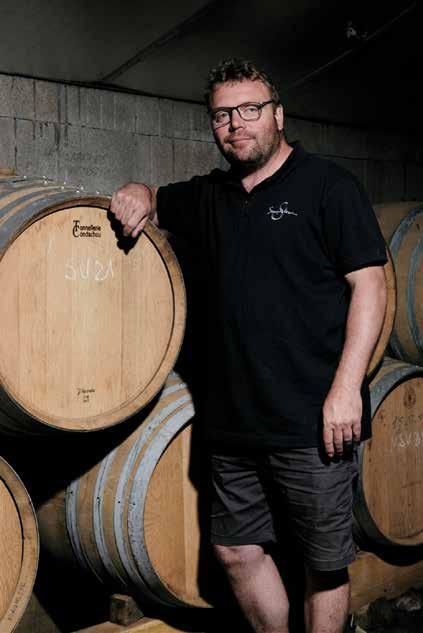
Talented trio Marie-Thérèse Canard, Jean-Michel Aubinel and Vincent Nectoux took up the reigns of this long-established Mâconnais estate in 1991. Since then, they have quietly but assuredly built a reputation for their vivid, site-specific wines. The winery is based in the hamlet of Prissé but produces wine from small holdings across southern Bourgogne. The vineyards are farmed according to sustainable agricultural practices.
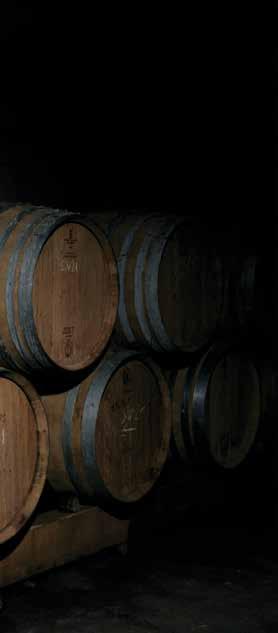
5263
5264
PRODUCER FOR THIS CELLAR

DOMAINE DE LA PIERRE DES DAMES, AOP BOURGOGNE PINOT NOIR, 2023
Pinot Noir
41 $ 246

A very pleasant Bourgogne Pinot Noir, with layers of spicy, tangy red fruit and discreet earthiness. Brisk acidity and an initially taut structure give way to a bright fruited mid-palate. Still very youthful with firm tannins, but offers quite a precise, persistent finish. Notable complexity for a seemingly modest appellation. 2025-2032–jb
NEW NEW
DOMAINE DE LA PIERRE DES DAMES, AOP COTEAUX BOURGUIGNONS, 2023
Chardonnay

LEARN MORE ABOUT DOMAINE DE LA PIERRE DES DAMES
5265
DOMAINE DE LA PIERRE DES DAMES, AOP MÂCON-LA-ROCHEVINEUSE, "LES CONDEMINES", 2023
Chardonnay
44 $ 264 $ 38 $ 228
There is an open, supple quality to this Chardonnay that, combined with its tangy bitters and lingering salinity, provides a lot of enjoyment. Pretty notes of hazelnut, orchard fruit, and citrus echo from the nose to the palate. Drinking well now and should hold nicely over the short term. 2025-2029–jb

La-Roche-Vineuse is located in the southern part of the Mâconnais. This warm vineyard area is blessed with abundant sunshine, giving a ripe, generous profile to its wines. Attractive herbal notes add complexity to the yellow fruit aromas. The palate is medium weight, with a pleasing peach fuzz like texture that enhances the sensation of minerality. Finishes fresh, smooth, and rounded. 2025-2030 –jb
salad
ORDER A CASE OF WINE THAT RARELY LEAVES FRANCE
From the commune of Fussey in the north of the appellation, this medium-lemonhued wine is classic Hautes Côtes with its cool aromas of green apple and conference pear in amongst hedgerows, greengage and cream. While the nose is pronounced but compact, the palate is a vivacious affair of tangerine, lemon, apple, nectarine, and quince, with a lingering and engaging finish. 2025–2026 – mp
Domaine Thevenot-Le Brun are Hautes Côtes stalwarts now into their 5th generation headed up by Nicolas Thevenot; he has a knack for producing exciting Pinot Blanc in an area better known for Chardonnay. Their ‘Clos du Vignon’ is a Monopole near the ruins of the Abbey of Lieu-Dieu, a Cistercian stronghold for over 600 years until 1790 when you-know-what happened. It was reportedly the site of a natural spring with healing properties. The potential for good wines here was rediscovered by Nicolas’ grandfather, Maurice, in the 1960s after a century of phylloxera-induced dormancy.

5266
DOMAINE THEVENOT-LE BRUN BOURGOGNE HAUTES CÔTES DE BEAUNE, BLANC, AOP, 2023
Chardonnay
5267
DOMAINE THEVENOT-LE BRUN BOURGOGNE HAUTES CÔTES DE NUITS, BLANC, AOP, 2023
Pinot Blanc, Chardonnay
$ 60 $ 360

An unconventional blend of 75% Pinot Blanc and 25% Chardonnay from parcels in Marey les Fussey. The extremely youthful nose exhibits a delicious, leesy character of wet wool, dried honey, and biscuit. On the palate, Chardonnay’s buttery, dairy-led notes are stylishly complemented by Pinot Blanc’s salty tang and hazelnut bite. The finish stands up to rigorous inspection and is full of bright and persistent flavour balanced by brisk acidity. 2025–2026 – mp
Tangerine, lemon, nectarine, quince [0.00]
Ahi tuna poke bowl with avocado
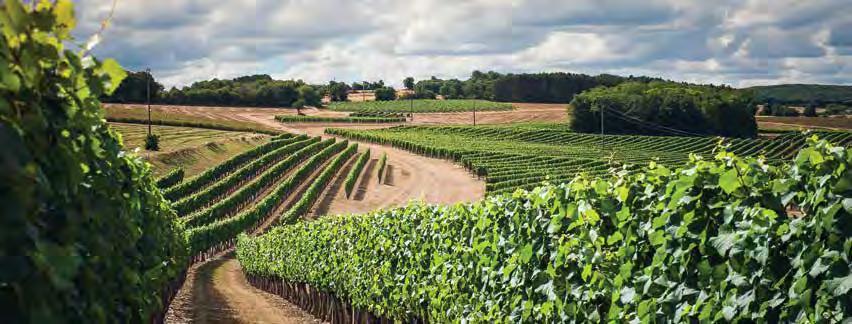
5268
THEVENOT-LE BRUN BOURGOGNE HAUTES CÔTES DE BEAUNE, ROUGE, AOP, 2023
DOMAINE THEVENOT-LE BRUN BOURGOGNE HAUTES CÔTES DE NUITS, ROUGE, "CLOS DU VIGNON", MONOPOLE, AOP, 2023
This pale ruby wine has a welcoming nose of fresh raspberry and red cherries plus a morsel of baking spice. The beguiling palate is a mix of strawberry, cranberry, hawthorn and violets, keeping check with grippy tannins and brisk acidity, leading to a fresh finish. 2025–2028 – mp

Pale ruby hue. The fruit is slightly stifled under a blanket of vanilla and cedar at this early stage but shows future promise with undertones of sweet almond, bramble, violet, and rose. The palate has some pretty notes of desiccated coconut and black cherry, supported by powerful tannins. Cellar this for a couple of years and it will reward you. 2026–2029– mp


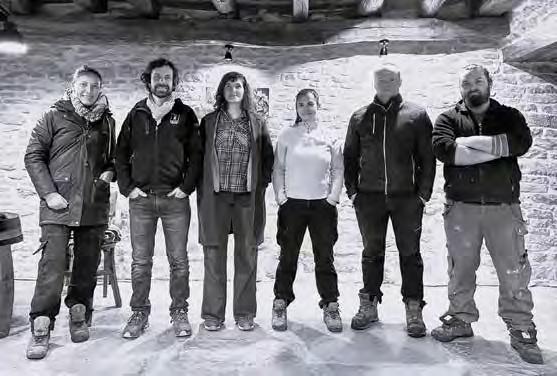

Danièle Bonnardot took over her father’s Domaine at Villers-la-Faye, west of Comblanchien’s limestone quarries, in 2008. All her wines are fermented using spontaneous yeasts before being gravity-fed into barriques (if oak maturation is required). Danièle’s is a gentle approach, racking
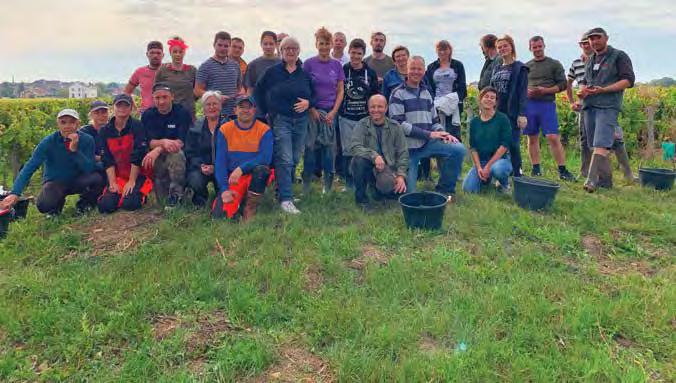
the wines by tap only (and not pump) two months before bottling with no fining nor filtration. She relies on the phases of the moon and a reading of atmospheric pressure to determine the point at which to bottle, in accordance with biodynamic principals. These are gloriously strippedback wines that get to the heart of that most Burgundian of concepts: terroir.
5273
From two 50-year-old plots on deep clay-limestone soils with east-south-east exposure this has a delicate, pale purple hue. Elegant nose of black cherry, mint, dried cranberry, and clove. An archetypal, medium-bodied palate is well-padded with redcurrant and cassis, plus a hint of bay and thyme. The tannins have some backbone and there is no shortage of acidity, so I expect this to develop nicely over the longer term. 2028–2032– mp

nose led by cedar, spice, and cinnamon; a second wave shows black cherry and red plum. The striking palate is all about grippy tannins wrapped around a medium-bodied core of cassis and red plum. Woodsmoke is consistently and subtly in the background and there is a typically Burgundian sous bois quality, too. 2025–2026 – mp

From vines planted in 1966 on deep clay-limestone soils, to the south of Beaune and heading towards Pommard. Pale ruby hue. The lieu-dit of Belissand pays homage to an important natural spring associated with the Celtic god, Belenos. Surprisingly mature, this opens with tertiary aromas of forest floor, tar, prune, and cooked black plum. The palate offers baked fruits, earthy aromas, and a soupçon of dark chocolate leading to a delicate finish. 2025–2026 – mp
Introducing our Everything but Red where you can discover exceptional wine with each shipment, whether it’s white, rosé, or sparkling, all with the ease of one convenient subscription.
In each case, you’ll discover:
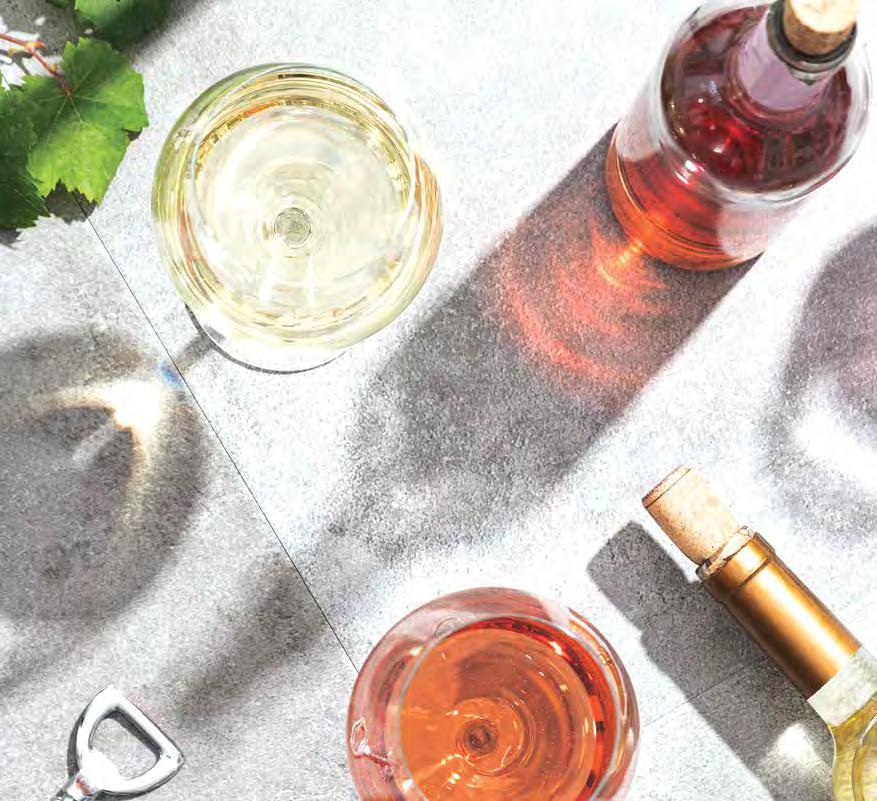
Bringing to a New Level!
6 bottles of delicious wine (surprise, it can be white, rosé, or sparkling!)
A personalized message and tasting notes from the producer
Introducing our Everything but Red subscription program, where you can discover exceptional wine with each shipment, whether it’s white, rosé, or sparkling, all with the ease of one convenient subscription.
Exclusive wine not found in the cellar offerings
In each case, you’ll discover:
6 bottles of delicious wine (surprise, it can be white, rosé, or sparkling!)
Subscribe now and receive 10 surprise cases of Opimian wines per year, expertly curated by our team!
A personalized message and tasting notes from the producer
Exclusive wine not found in the cellar offerings
DISCOVER A DELICIOUS SURPRISE IN EVERY BOX!
Subscribe now and receive 10 surprise cases of Opimian wines per year, expertly curated by our team!
DISCOVER A DELICIOUS SURPRISE IN EVERY BOX!
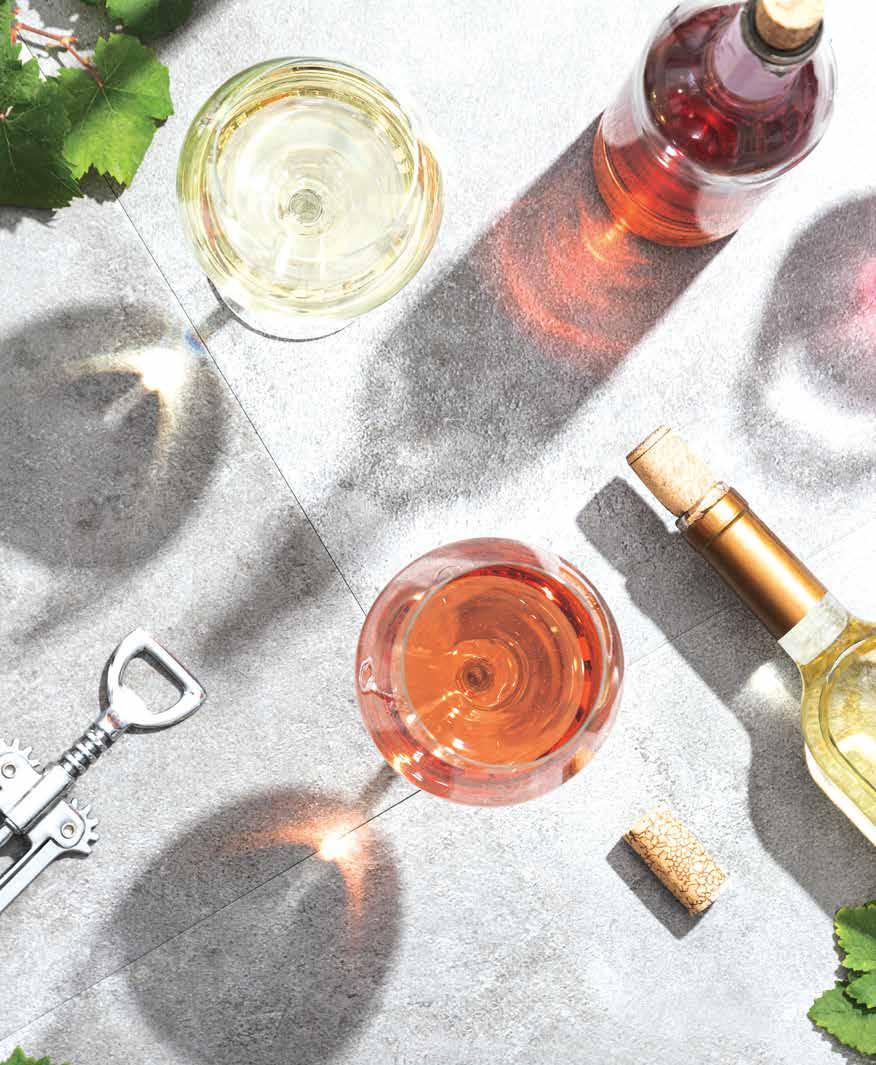

5274
DEPERNON FRÈRE ET SŒUR, AOP BOURGOGNE CÔTES DU COUCHOIS, « LES GRANDES PLANTES » 2022
5275
DEPERNON FRÈRE ET SŒUR, AOP BOURGOGNE CÔTES DU COUCHOIS, « LES GRANDES PLANTES », 2023

The “Les Grandes Plantes” vineyard is planted on clayrich soils that give heft and richness to its Pinot Noir. In 2022, the warm growing conditions gave a perfumed nose laden with spice, floral notes, and bright red fruit. The palate is moderately firm, with tangy fruit, and fine-grained tannins. Drinking well now, but better with another year in cellar. 2026-2032–jb

The 2023 vintage of “Les Grandes Plantes” has a darker fruited profile, with the same underlying spicy notes that are so charming on the 2022. Given its youth, the taut tannic structure and oaked nuances are a little more marked here but should integrate nicely within a couple of years.
Pleasant savoury herbal notes linger on the finish. 2026-2032–jb
The lesser-known vineyards of the Côtes du Couchois lie in the prolongation of the Côte de Beaune, southwest of Maranges. This tiny vineyard area is truly a hidden gem, producing vivid, expressive Pinot Noir. Stéphanie and Jérôme are the 5th generation of the Depernon family to run their family’s historic Côtes du Couchois estate. Their wines are finely crafted with excellent typicity.
5276
DEPERNON FRÈRE ET SŒUR, AOP MARANGES, 2023
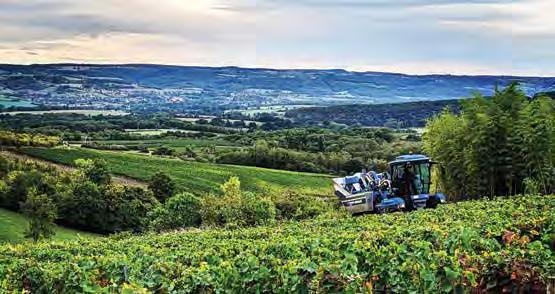

The under-the-radar Maranges appellation, on the Côte de Beaune, produces some very fine Pinot Noir on its slopeside vineyards. This 2023 vintage cuvée is juicy, lively, and taut with attractive red and dark fruit, well integrated cedar notes from its oak ageing, and notable depth of flavour. A well-balanced red with good medium term ageing potential. 2025-2035 –jb
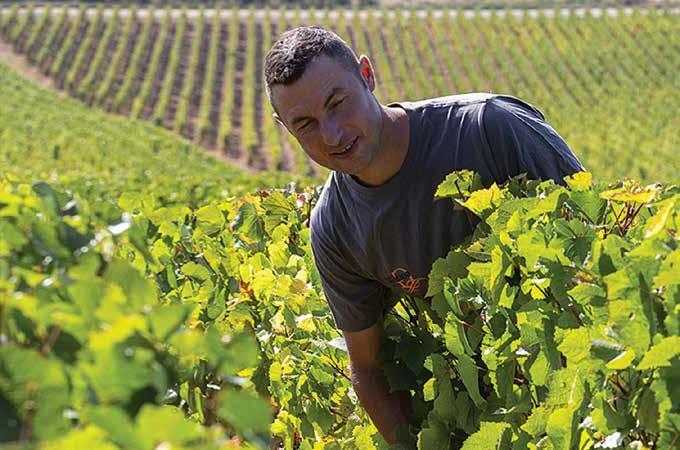
Michel Goubard, together with his son Pierre-François (and grandson Vincent) pays homage to the local historian, Claude Courtépée (23 January 1721–11 April 1781), on his Mont-Avril label. Traditional doesn’t mean closed-minded; the elaboration process seeks to create robust and ageworthy wines that reward patience and eschew fashion in favour of a formula in which they have good reason to believe. Extraction comes from both punch downs and pump overs and maturation is predominantly in used casks. These are satisfying reds that would accompany a terrine, fresh bread, and cornichons served on an old farmhouse table in cheap glasses.


5277
DOMAINE GOUBARD BOURGOGNE CÔTE CHALONNAISE, MONT-AVRIL, AOP 20% FÛT DE CHÊNE, 2023
If this is what they drank in Courtépée’s time then count me in. The nose is filled with layers of scrumptious black cherry and plum, plus stylish clove-infused aromatics. On the medium to full palate the fruit has plenty of umph and is well supported by rustic, even firm tannins and sound acidity. Dried cranberry and cooked plums hold court on the finish. Bring out the pâté, and drink now. 2025–2028 – mp
Medium purple. Punchy, with a nose of earthy beetroot, tomato leaf, red cherry, and sweet spice. The tannins are reasonably subtle but there is a vibrant splash of acidity on the medium-bodied palate. Racy plum and redcurrant flavours combine with Burgundian sous bois and discreet oak notes to make this a winner. 2025–2028 –jb
Cooked plums, dried cranberry, cedar, dried redcurrant
Pâté with cornichons and fresh baguette
Braised veal roast with spring vegetables
TRULY A GRAND CRU IN EVERY SENSE OF THE WORD
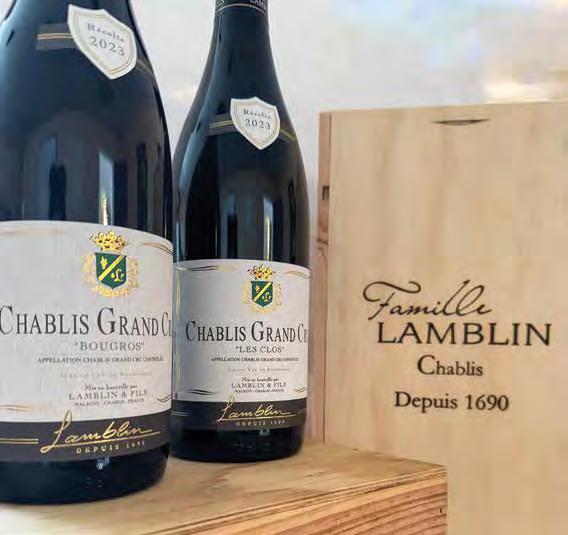
CHABLIS GRAND CRU, LES CLOS, AOC CHABLIS GRAND CRU, 2023
CHABLIS GRAND CRU, BOUGROS, AOC CHABLIS GRAND CRU, 2023
CHABLIS GRAND CRU CASE1 BOTTLE EACH: LES CLOS AND BOUGROS (WOOD CASE)
Chardonnay 5262
Chardonnay
$ 170$ 340
This exciting mixed (wood) case offers Chablis enthusiasts the chance to discover two of the region’s finest Grand Cru vineyards. “Le Clos” is the largest Chablis Grand Cru, grown on very chalky Kimmeridgian soils. The open, southwestern exposure of its vineyards bring plentiful afternoon sunshine. The wines of “Le Clos” are prized for their exquisite balance between opulence and racy acidity. The vineyards of “Bougros” are steeper and face due south. The soil is richer and deeper here, giving wines with more rounded acidity and a generous, fruity character. Both cuvées are fermented and aged in oak, adding to their breadth and complexity.
One sip of this excellent 2023, and it is easy to see why the “Le Clos” terroir is so revered. The nose is highly complex with interlaced mineral, ripe citrus, apple, and floral nuances. Nervy precise acidity sets the palate off with a bang. This is a weighty, precise Chardonnay with fantastic tension, notable typicity, and a very long, elegant finish. A little patience and this fine Chablis will reveal so much more! 2027-2040 –jb
The 2023 Grand Cru Bougros is also very true to type, with its weighty, broad, highly concentrated palate. Intense notes of ripe yellow fruit, give way to pretty white floral notes, and nutty undertones on the nose. The same heady fruit echoes on the palate, balanced by crisp, juicy acidity. A powerful, nuanced white wine that will continue to improve for many years to come. 2026-2040 –jb
13%
Lobster thermidor
Apricot, hazelnut,
Époisses de Bourgogne
Te Mata’s obsession with finetuning applies to all their wines. The Bullnose vineyard, situated in the Bridge Pa Triangle, directly west of Hastings, is one of Hawke’s Bay’s warmest areas. It is notable for its red iron-rich sandy loam over gravel, which retains valuable heat and contributes to the exceptional ripening here. Individual lots were selected from the Bullnose, Isosceles, and Hotspur vineyards as late as 25 and 26 March 2021 (add six months to get the northern hemisphere equivalent). Grapes were destemmed prior to fermentation, then underwent an extended maceration on the skins before pressing and induced malo. Separate lots were then run into a mixture of new and seasoned French oak barriques for 16 months’ maturation, topped and racked, before eventual blending and bottling in November 2022.
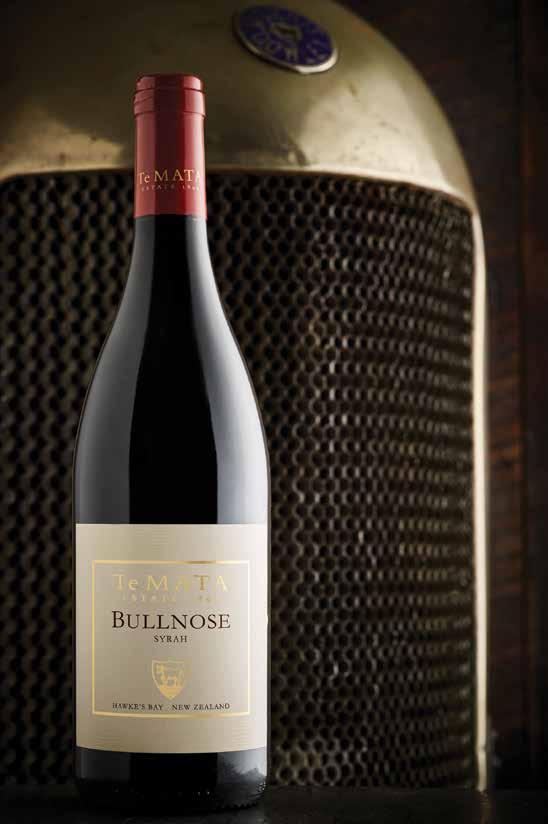
RARE WINES TO ENHANCE YOUR CELLAR
This does for Hawke’s Bay Syrah what Coleraine does for Cabernet Sauvignon. I’d like to think I’ve drunk every vintage of this glorious, perfectly-proportioned and definitive Syrah. Neither Rhône, Barossa nor Paso Robles, Bullnose it is an inimitable interpretation of this canonical variety. Gorgeous nose with white and black pepper, blackberry, blackcurrant, black cherry, mint, iodine, leather, thyme, liquorice, and eucalyptus. Massively structured on the palate with high levels of fine tannins and the requisite concentration to age for a decade or more. The fruit is tightly wound and intensely flavoured, including blackberry, black cherry, iodine, liquorice, black pepper, vanilla, clove, coffee and dark chocolate. Another bullseye for this iconic and globally important Syrah. 2028–2035– mp
Grilled lamb chops with cherry glaze

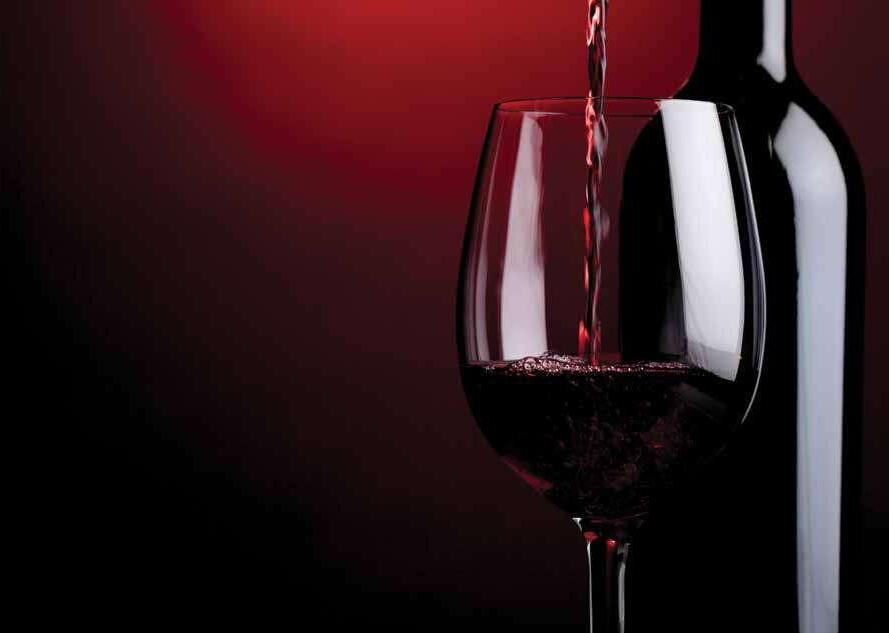
A CONNOISSEUR'S DREAM. Exclusive to this program, Founders Choice wines are not available elsewhere in the Cellar Offering. Dedicated to the spirit of our Founders, this program presents only the finest wines.
Thistledown Wine Company!

The grape for the Founders’ Choice wine comes from a selection of the finest vineyards in McLaren Vale. Old bush-trained vines, sandy, mineral-rich soils, and expert craftsmanship combine to create a wine that unfolds with complexity, perfume, and layers of spice.

In 2015, three of his wines from the 2013 vintage received a rating of 100 points from The Wine Advocate; thus his nickname, “Mr. 300 points” (Herr 300 Punkte in German). We are pleased to announce that Opimian has secured a small allocation of these outstanding wines from this brilliant winemaker. Don’t miss this opportunity to get your hands on these top-scoring wines, as they usually sell out in record time! Only at Opimian.ca beginning February 27.

